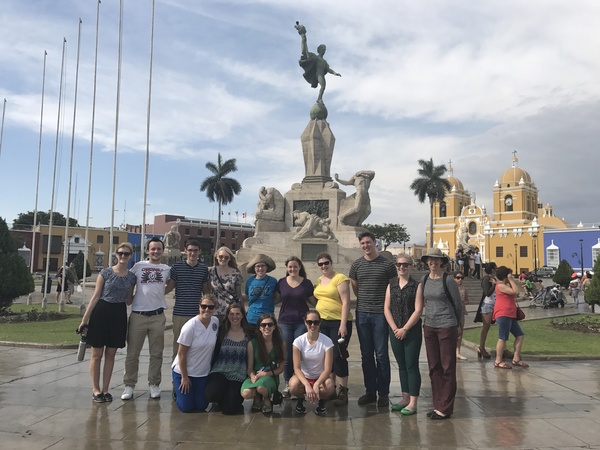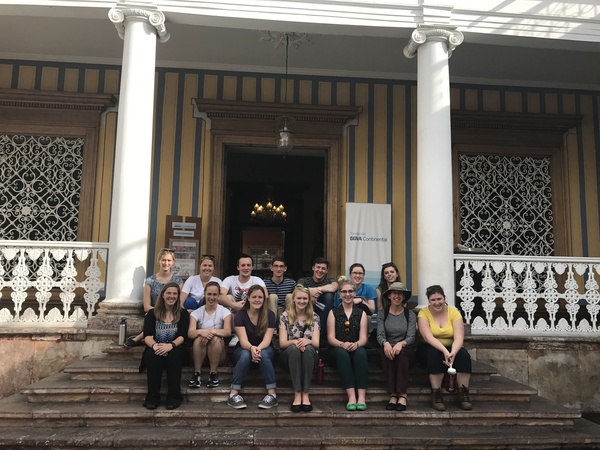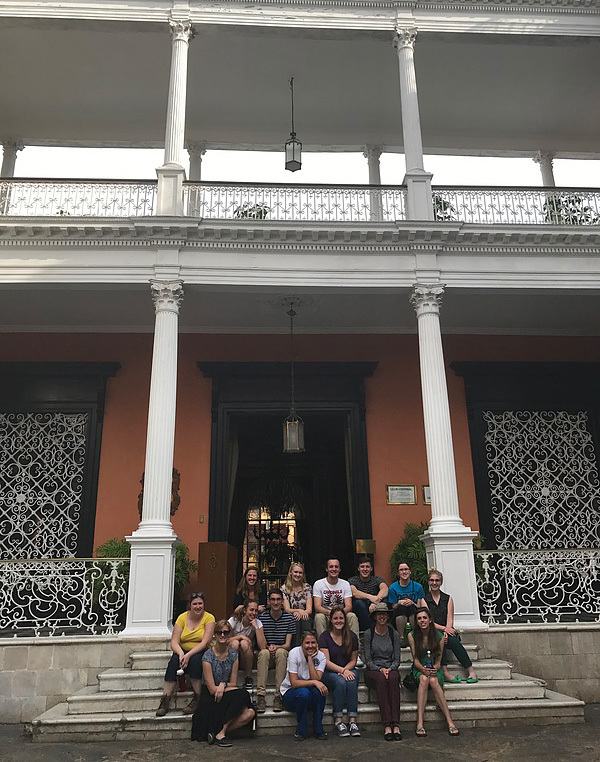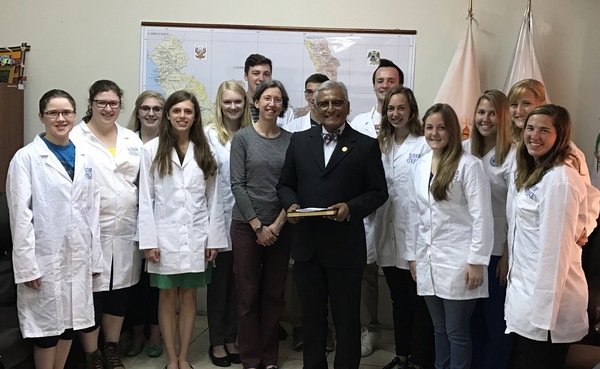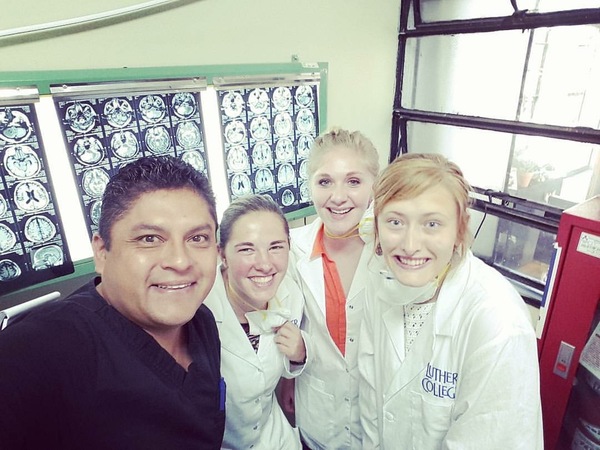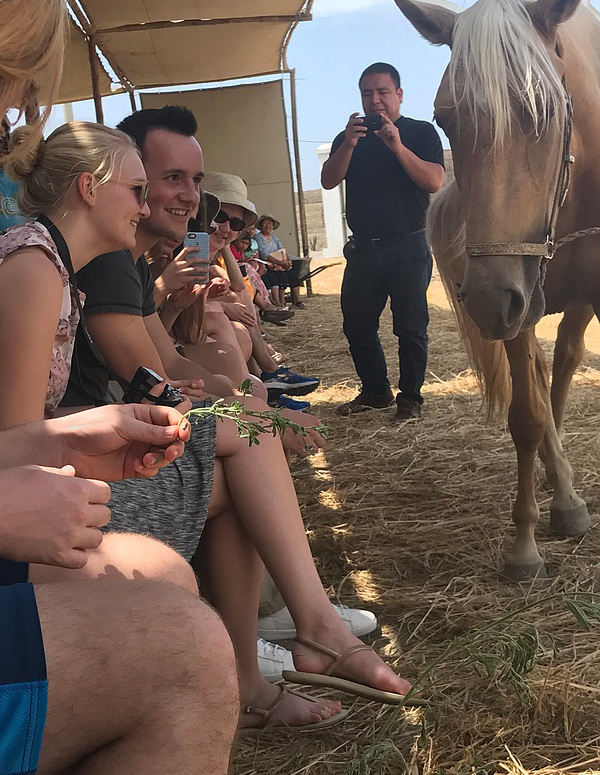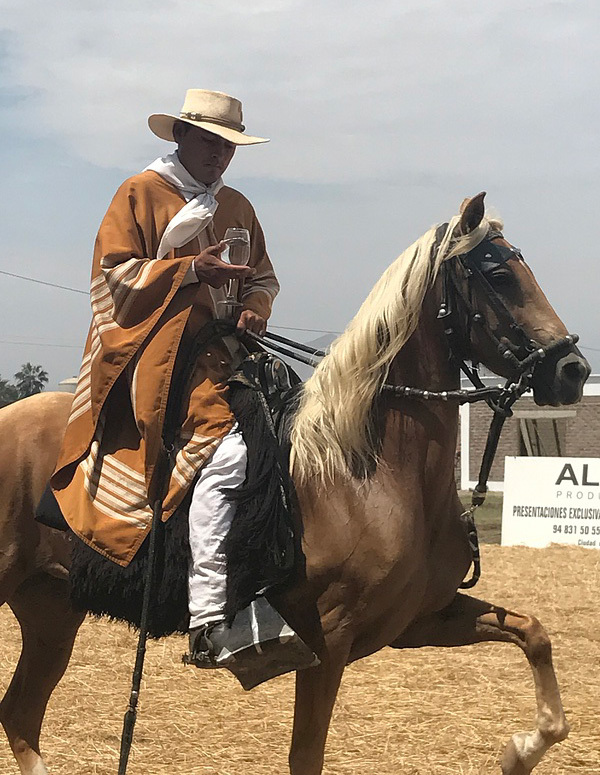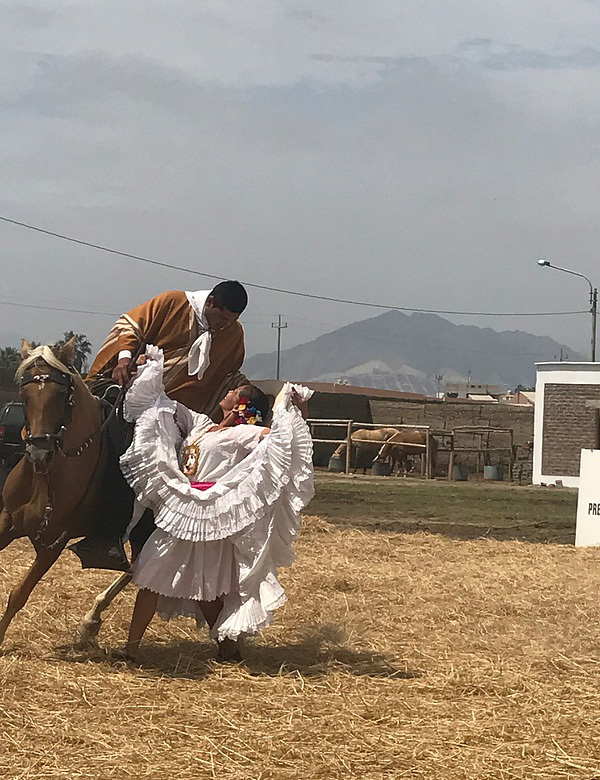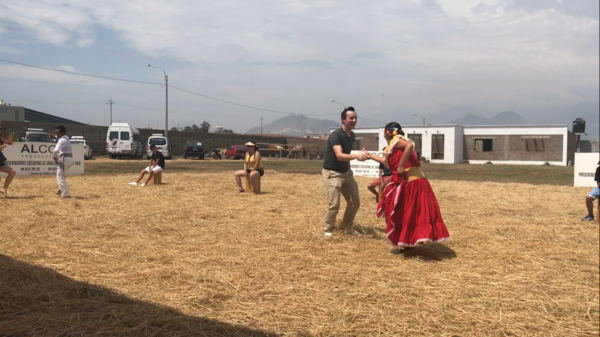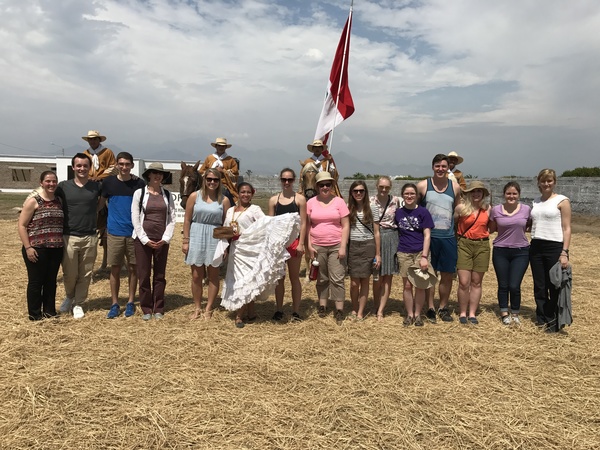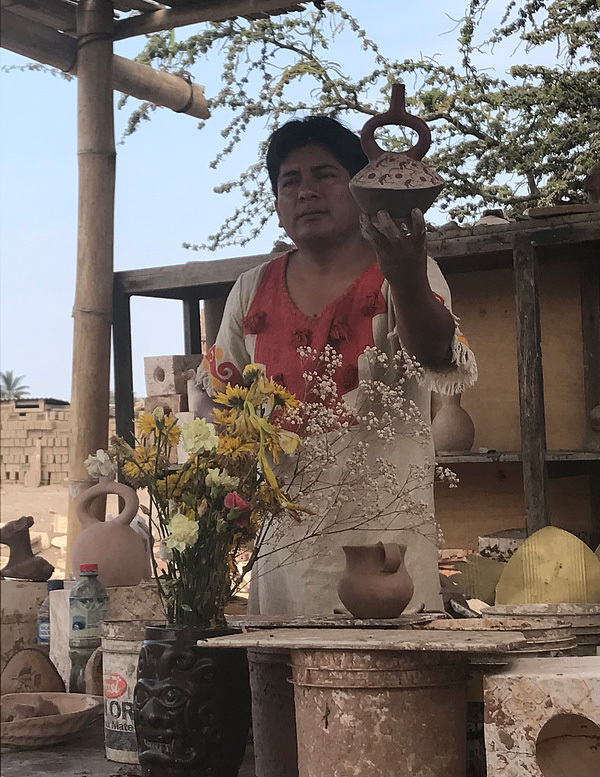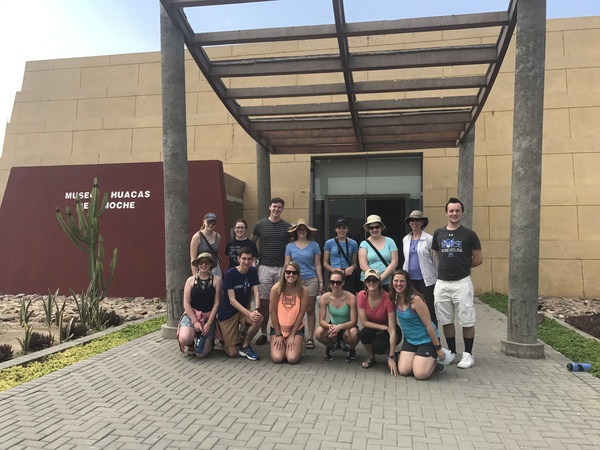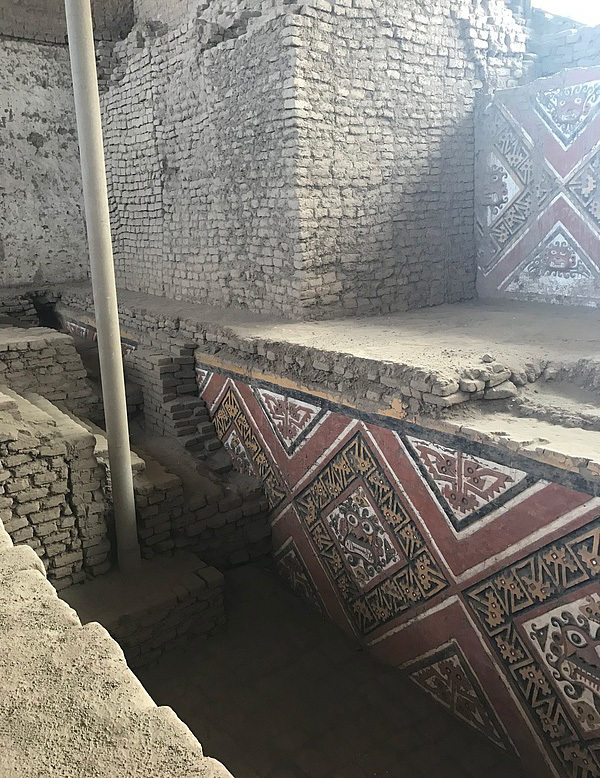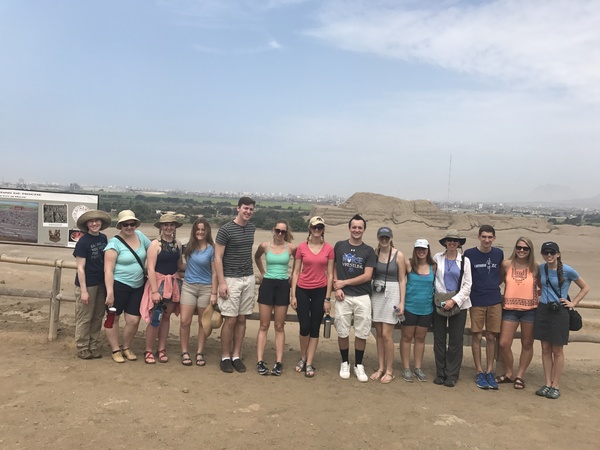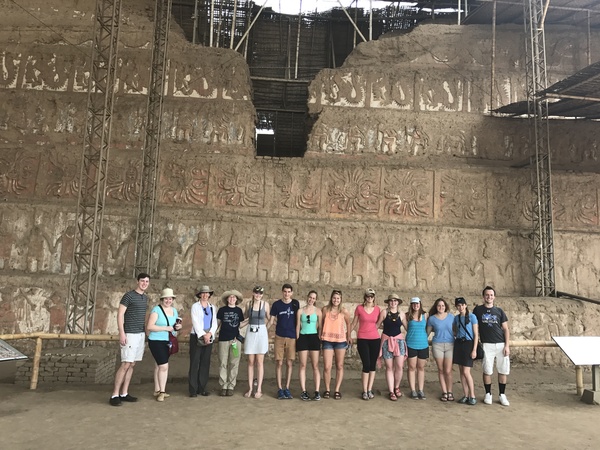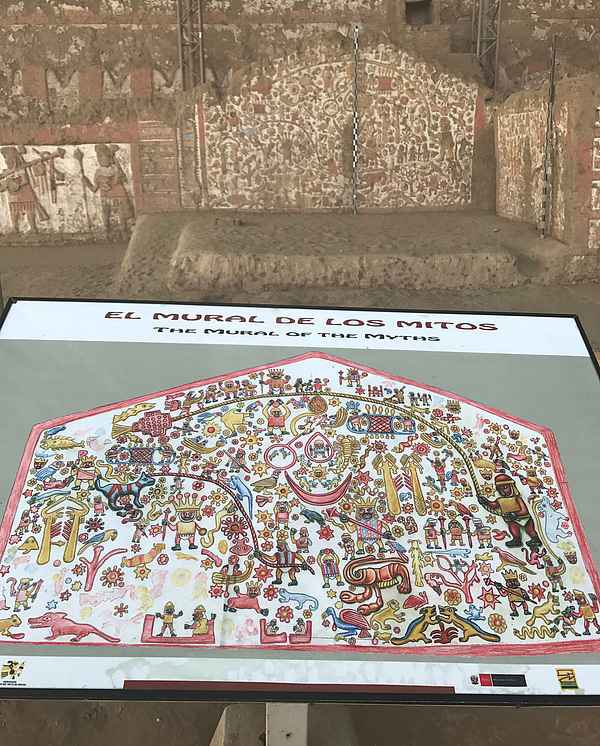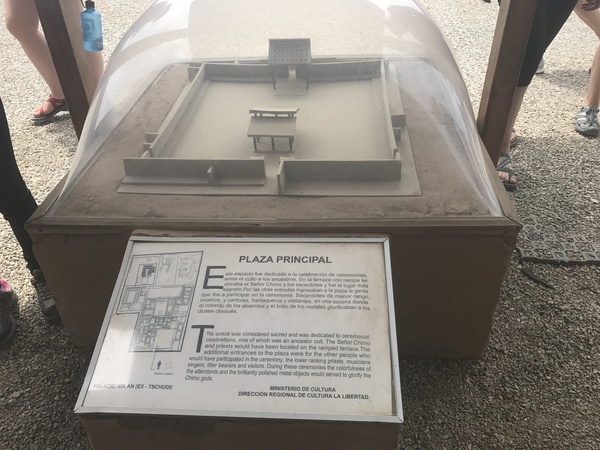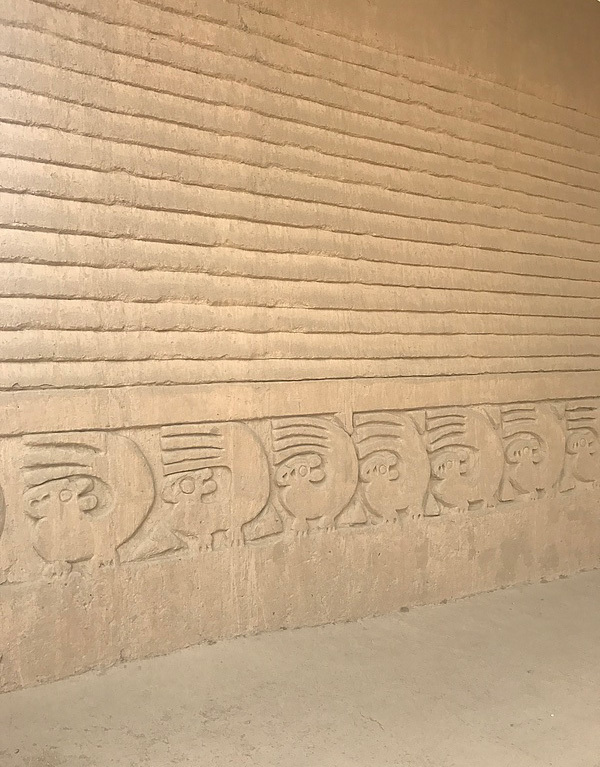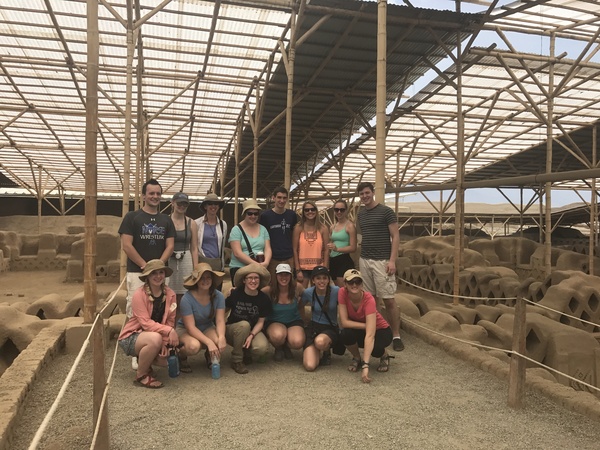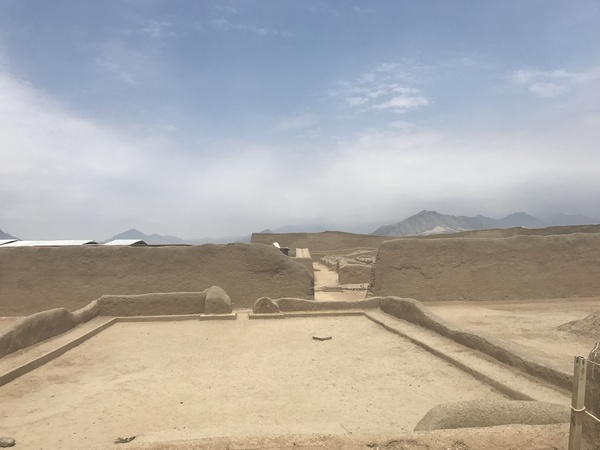The first few days in Trujillo
¡Hola Todos! We have been up to quite a lot here in Trujillo! We are all settling into a nice routine and getting comfortable with our families. Each family has been so wonderful and they are sharing so many wonderful things with us! We are truly getting acquainted with the city of Trujillo. (It's the 3rd biggest city in Peru!) Here is a little recap on a few of the amazing experiences we have had thus far:
Working in the Hospital
After learning a lot about the hierarchy of the pecking order in the hospital in Peru, we are all finding our place in different departments. We are spread out all over the hospital and are all learning different things. For example, we have students in areas like surgery, psychiatry, pediatrics, gynecology, and obstetrics. We are simply observing and trying to pick up new Spanish vocab words. It is a different experience for each one of us and we are all gaining a different perspective.
Class
We spend two hours every day, Monday through Friday, in an official class structure. However, we are learning so much more in addition to the specified class time. During class, we start by sharing new vocabulary words we heard during our observations in the hospital that morning. Then we move on to learning some new vocab words generally paired with diagrams of the body. We also spend time in class learning about different ethical pieces about interpreting during a medical interview as well as learning about different medical conditions like diabetes. We are getting a little burst of knowledge in everything.
History of Peruvian Medicine and Literature
Each day after class, we have an hour of a cultural event. We switch between a discussion of a cultural topic and a dance lesson. So far we have had discussions of the history of Peruvian medicine and a brief overview of Peruvian literature in comparison to United States literature. We learned about different types of medicine from pre-Inca natural herbs to today's insurance system in Peru. Talk about an incomprehensive hour! In our literature chat, we learned how Peruvian literature first began being written after coming from a tradition of oral telling of stories. We also learned about famous Peruvian authors like Cesar Vallejo, who is the Peruvian equivalent of Walt Whitman, and Julio Ramón Ribeyro, who is the Peruvian equivalent of Edger Allen Poe. Our brains are certainly being filled with Spanish as well as vast knowledge.
Dance Class
On other days, for our cultural time, we have a dance lesson in the Marinera: the traditional dance of Trujillo. We started the day of our dance lesson by going to a Horse Show where the horses danced with the people. The horses are so smooth when they are stepping with the music that the rider can hold a glass of Pisco - the Peruvian alcohol - without spilling a drop! We got to see beautiful Marinera dancing and then upon returning to our school we got to try our hand at the basic steps of the Marinera! Everyone did very well and it was fun to be more immersed in the culture. We have several more days of lessons so hopefully we can all come back to the States Marinera pros!
Conversation Club
Twice a week, we stay at the school later to participate in what the English School, El Cultural, calls Conversation Club. During this hour we spend time talking with some of the students at the school. We spend 30 minutes talking in Spanish to help us practice and 30 minutes talking in English to help them apply what they are learning. This also has given us a breath of fresh air as it is nice to give our brains a mini break from working in Spanish all day :) Everyone has had a lot of fun with this portion of the day because we really get to connect with the students at the school and they offer an in-depth insight into the typical lives of Peruvians and how similar we all are!
Saturday at the Ruins and the Beach in January!
We spent the majority of Saturday touring around some of the archeological finds in Trujillo. We delved into the Moche culture, transporting us back to the years 1CE to 800CE, by discovering their Moon and Sun temples for ourselves. We started the morning off seeing how the Moche people made their ceramic pots and learning how a German Archeologist came to Trujillo and unearthed the entombed Moche ruins. He and his team spent many years cleaning off the ruins and interpreting what the story beneath the dust had to say. Much of the Moche ruins are preserved due to the layered construction style of the Moche people, where they created each level on top and around the other levels. This helped to prevent the inner artwork from being harmed by environmental factors over the years. We also were lucky to visit the recently opened museum of the Moche ruins that had on display many of the artifacts found in the archeological dig. It was amazing to see everything be completely authentic and truly get a hint of the flavor of the thriving civilization that was the Moche people.
We also got to visit the Chimu ruins which were completely open-air and beautiful. The Chimu Civilization thrived between the 12th and 15th century, just before the Inca civilization. The ruins we visited was a fort built very close to the ocean! Enclosed in the massive walls of this fort was a city. The first opening was the gran plaza, which is a big open space allowing for multi-purpose uses. The fort had three plazas in total and a beautiful room for audiences with the leaders of the civilization. The Chimu people has intricate decorations built into the clay of the foundation. It also looks as if there is a form of a neighborhood structure for the living quarters inside the fort. It is quite amazing how places like this were covered mostly by sand, lost to the world for years. Then after being rediscovered, they are being maintained for us to continue to learn from their rich history.
After learning about the Moche and Chimu civilization which both pre-dated that of the Inca civilization, we headed to the beach. We ate an amazing lunch where some of our crew was daring enough to try the traditional Ceviche, fish, of Trujillo. Anna Larson really enjoyed it :) After lunch we took on the waves of Trujillo! The difficulty was that the sand on the beach was mostly covered in rocks more than sand. Regardless it was quite fun to body surf and be in the ocean in the middle of January!! :) Couldn't ask for anything better!
We are all making a little life here in Trujillo and can't wait for another fun filled week! We will touch base again soon! Until then, hasta luego!




